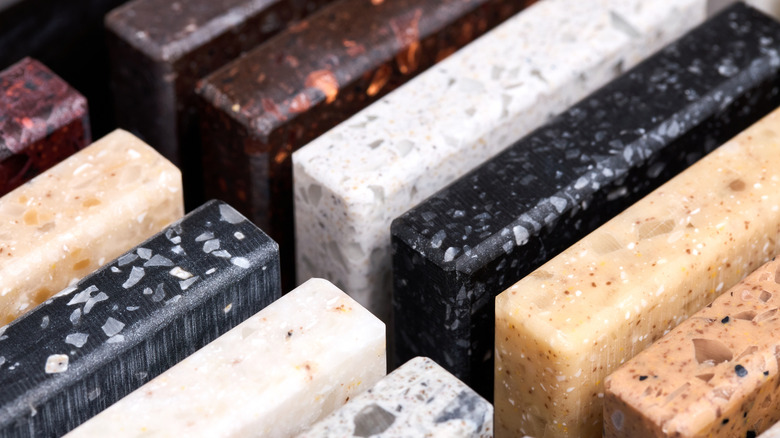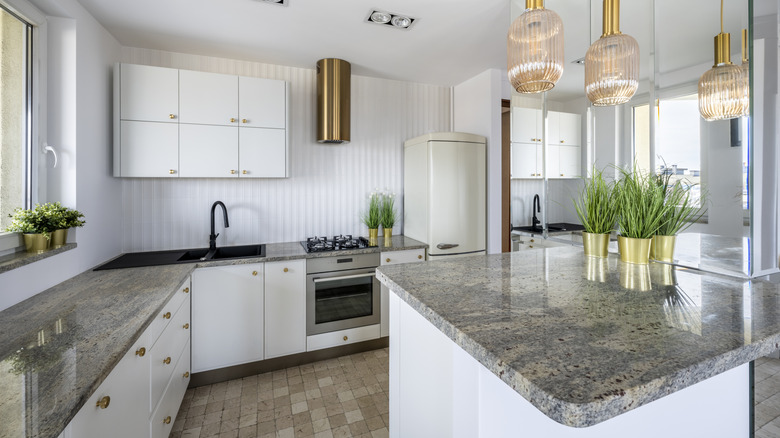Tips For Choosing A Countertop Color That Gives Your Kitchen The Right Vibe
Since it's such an essential part of the home that sees a lot of use each day, it's important that you make your kitchen as comfortable and as aesthetically pleasing as possible. While it's crucial to choose a functional countertop material, selecting the right countertop colors can make a big difference in the overall look and feel of your kitchen. Not all hues work well for kitchen countertops, so the one you choose should be based on a few different factors. One mistake to avoid when buying new kitchen countertops is not considering the overall color scheme in your kitchen. The other elements in your kitchen, colors that are used in the room, and the interaction of various materials should be taken into account. If you get this right, you'll be happy with your countertop color decision for a long time to come.
One of the first things to think about when choosing a countertop color is whether you want light or dark kitchen countertops. Dark countertops tend to make your kitchen feel smaller but they can add depth and make the room feel more comfortable and cozy. Lighter colors, however, can help make a kitchen feel larger than it really is. If you have a very small kitchen, a lighter countertop color could be helpful. Also, consider how the appearance will change over time. Dark countertops will hide imperfections such as scratches, dirt, and grime more easily than lighter countertops will.
Factors to consider when choosing kitchen countertop colors
When choosing a kitchen countertop shade, be sure to keep color psychology in mind. Different colors evoke different emotions and can dramatically change the feel of your kitchen. Blues, for example, can help create a calm and tranquil atmosphere while red creates a feeling of excitement and interest which can even boost the appetite. Although scratches and grime will show up more easily on white countertops, this color does help a space feel more clean and open.
Additionally, be aware of basic color theory and carefully determine how the countertop color interacts with the hues of cabinets and other kitchen elements. Consider using complementary or analogous colors to create winning cabinet and countertop color combinations that will transform your kitchen. You'll also want to think about the appearance of your kitchen floors, walls, backsplash, and appliances to choose a color that works well with the rest of your kitchen. Aim to create a cohesive color scheme that is balanced and striking but also creates the atmosphere you prefer.

